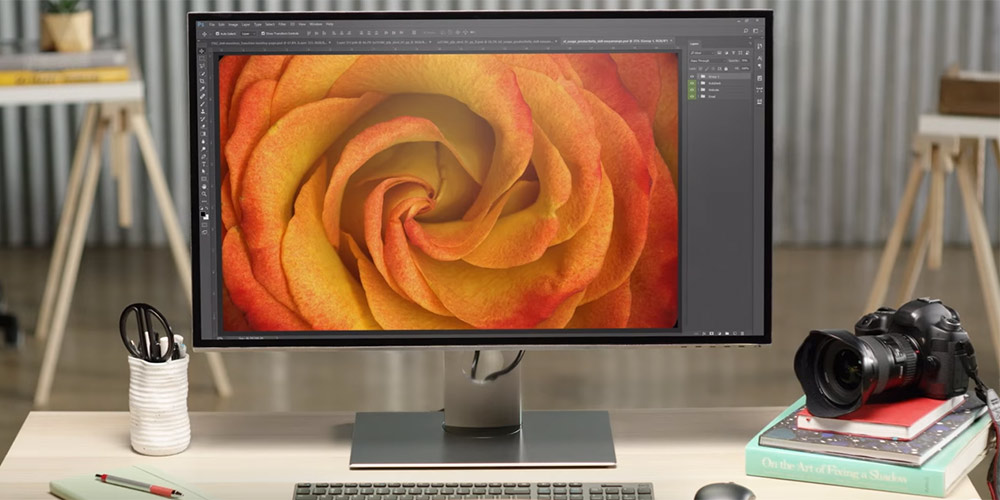Mastering Visual Precision: A Deep Dive into the Best Monitors for Photo Editing Enthusiasts

Introduction:
In the realm of visual arts, photo editing demands precision, color accuracy, and a display that faithfully reproduces the nuances of images. A high-quality monitor is an indispensable tool for photographers, graphic designers, and visual artists seeking to bring their creative visions to life. In this extensive guide, we will navigate through the intricate landscape of monitors, exploring the key considerations, technical specifications, and top recommendations for those in pursuit of the best displays for photo editing.
Understanding the Unique Needs of Photo Editors:
Photo editing is a meticulous process that requires an accurate representation of colors, details, and contrast. The monitor is the primary interface through which photo editors interact with their work, making it essential for the display to meet specific criteria. Factors such as color accuracy, resolution, panel technology, and connectivity play a pivotal role in determining the suitability of a monitor for photo editing tasks.
Key Considerations:
- Color Accuracy and Calibration: The cornerstone of a monitor for photo editing is color accuracy. Look for monitors that cover a wide color gamut, such as Adobe RGB or DCI-P3. Factory calibration or support for hardware calibration tools ensures that the colors displayed on the monitor match the intended color profile, allowing for precise and consistent editing.
- Resolution and Pixel Density: A high resolution is crucial for photo editors who need to scrutinize fine details. Monitors with at least a 2K resolution (2560×1440) are recommended, while 4K monitors (3840×2160) provide an even more detailed and immersive viewing experience.
- Panel Technology: The choice of panel technology affects factors like color reproduction, viewing angles, and response times. In-Plane Switching (IPS) panels are popular for their wide viewing angles and accurate color reproduction. Consider IPS or similar high-quality panel technologies for optimal photo editing performance.
- Brightness and Contrast Ratio: Adequate brightness and contrast ratio contribute to a monitor’s ability to display a wide range of tones, ensuring that subtle details in shadows and highlights are visible. Look for monitors with high brightness levels (measured in nits) and a high contrast ratio for optimal visual clarity.
- Connectivity: Versatile connectivity options are crucial for photo editors using various devices. Monitors with multiple HDMI, DisplayPort, and USB ports provide flexibility in connecting cameras, external storage, and other peripherals. USB-C connectivity is particularly useful for streamlined cable management and fast data transfer.
Top Monitor Recommendations:
- Dell UltraSharp UP2718Q: The Dell UltraSharp UP2718Q is a 27-inch 4K monitor that excels in color accuracy, supporting 100% Adobe RGB and 97.7% DCI-P3 coverage. With factory calibration, HDR support, and a USB-C port, it caters to the demanding needs of professional photo editors.
- BenQ SW271: The BenQ SW271 is a 27-inch 4K monitor designed for photographers and graphic designers. It covers 99% Adobe RGB and 100% sRGB, features advanced color calibration tools, and supports High Dynamic Range (HDR) for a visually stunning editing experience.
- EIZO ColorEdge CG319X: EIZO is renowned for its ColorEdge series tailored for professionals. The CG319X is a 31-inch 4K monitor with 99% Adobe RGB coverage, built-in color calibration, and a wide viewing angle, making it an excellent choice for meticulous photo editing workflows.
- LG UltraFine 5K Display: Designed in collaboration with Apple, the LG UltraFine 5K Display offers a 27-inch 5K resolution with P3 wide color gamut support. With Thunderbolt 3 connectivity, it seamlessly integrates into macOS environments, providing a high-quality display for photo editors working on Apple devices.
- ASUS ProArt PA279Q: The ASUS ProArt PA279Q is a 27-inch 2K monitor with 100% sRGB and 99% Adobe RGB coverage. With factory calibration and multiple connectivity options, including HDMI, DisplayPort, and USB, it strikes a balance between color accuracy and versatility for photo editing tasks.
Conclusion:
Selecting the best monitor for photo editing is a crucial step in elevating the quality of visual work. The recommendations provided, alongside the key considerations outlined, serve as a comprehensive guide for photographers, graphic designers, and visual artists seeking to enhance their editing experience. Whether meticulously adjusting color profiles, fine-tuning details, or bringing out the full vibrancy of an image, the right monitor becomes an essential tool in the arsenal of creative professionals. As technology continues to advance, the synergy between photo editing software and high-quality monitors opens up a realm of possibilities for users to express their creativity with unparalleled precision and visual fidelity.




